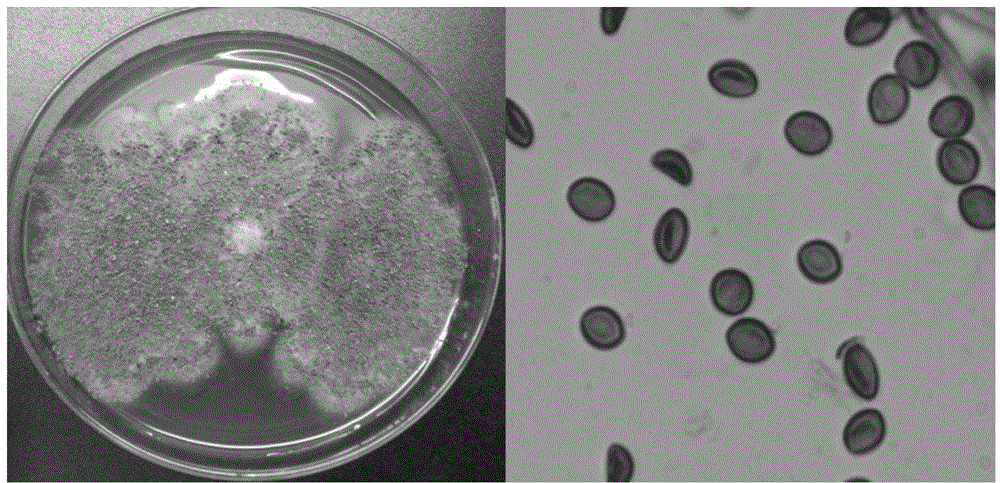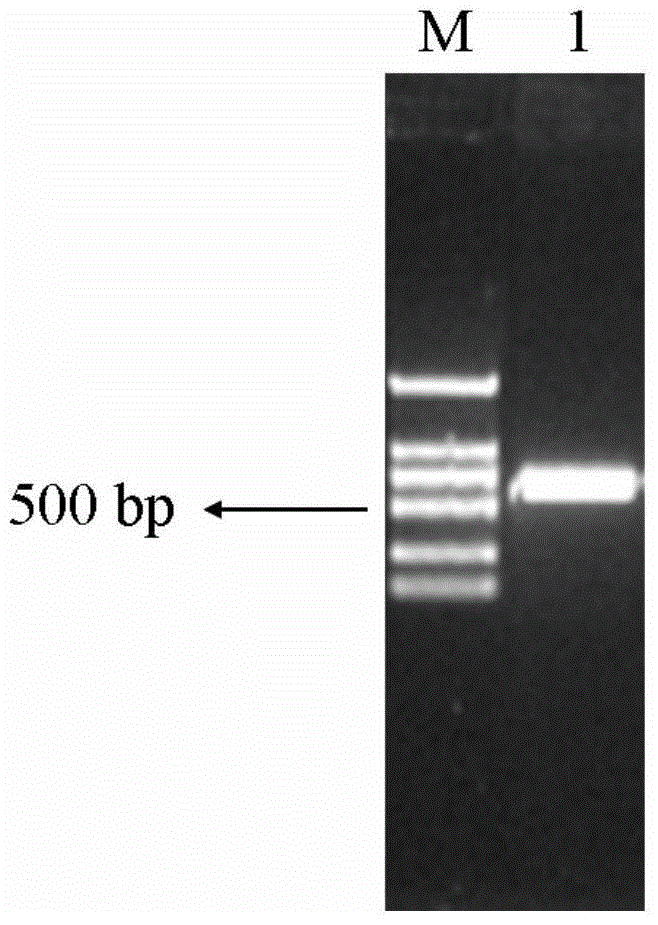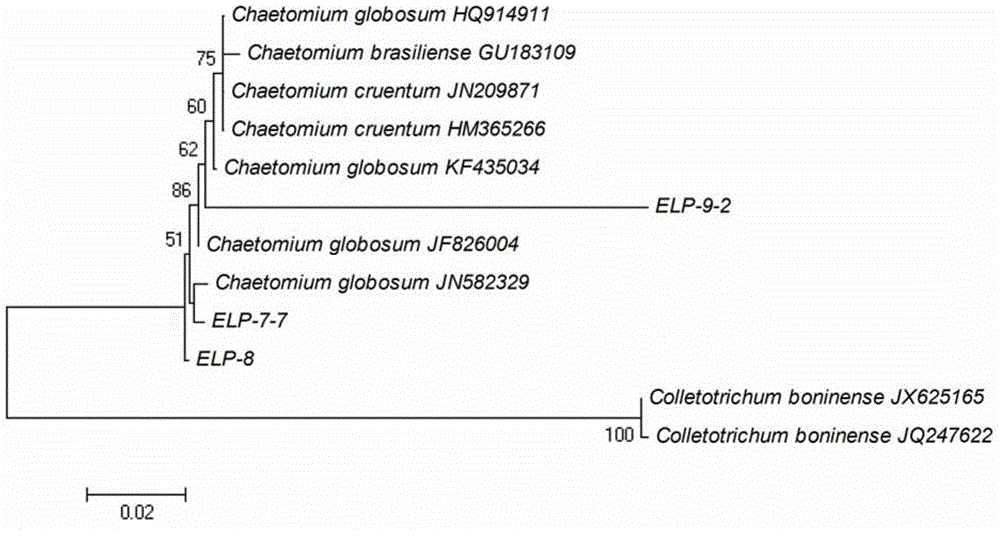Pigeon pea endophytic fungi high in yield of flavipin and application of pigeon pea endophytic fungi
A technology of endophytic fungus and aspergillus, applied in the field of bioengineering, can solve the problems of destroying ecological balance, low efficiency of disease control, and lack of standard operation technology
- Summary
- Abstract
- Description
- Claims
- Application Information
AI Technical Summary
Problems solved by technology
Method used
Image
Examples
specific Embodiment approach 1
[0019] In this embodiment, the pigeonpea endophytic fungus with high yield of aflatoxin is Chaetomium globosum (Chaetomiumglobosum) ELP-8, which has been preserved in the China Center for Type Culture Collection, and the preservation number is CCTCC No: M 2015001, The deposit address is Wuhan University, Wuhan, and the deposit date is January 5, 2015.
[0020] In the present embodiment, Chaetomium globosum (Chaetomium globosum) ELP-8 has bacterial colony growth after being cultivated on PDA solid medium for 3 days, and the bacterial colony starts to be white and thin flocculent, and the colony diameter reaches 8cm after about two weeks of growth. The surface of the colony is gray-brown and a large number of small black particles begin to appear, and the back is amber.
[0021] In the present embodiment, Chaetomium globosum (Chaetomium globosum) ELP-8 is isolated from healthy pigeonpea leaves, and the pigeonpea leaves are collected from the botanical garden of Northeast Forestr...
specific Embodiment approach 2
[0030] In the present embodiment, Chaetomium globosum (Chaetomium globosum) ELP-8, the aflatoxin in this bacterial strain is measured as follows to the potted control effect of crop root rot:
[0031] Put 100g of sorghum grains into a 250mL Erlenmeyer flask, soak in water for 12h, filter to dry, and sterilize under high pressure. Inoculate 5 blocks of 5mm activated Fusarium oxysporum into each bottle, cultivate at 28°C for 5 days, and make dry powder for later use.
[0032] The soil was taken from the botanical garden of Northeast Forestry University, and the soil was sterilized by autoclaving (121°C) twice, each time for 2 hours, and 1 day apart.
[0033] After thoroughly mixing 10 g of Fusarium oxysporum powder and 250 g of sterilized soil, put it into a cultivation pot (outer diameter 6.5 cm, height 8 cm). Sow the soybean, wheat, and corn seeds sterilized on the surface in the cultivation pots, 10 seeds in each cultivation pot, and treat 3 nutrition pots in each group. Ca...
specific Embodiment approach 3
[0047] In the present embodiment, Chaetomium globosum (Chaetomium globosum) ELP-8, the aflatoxin in this bacterial strain is measured as follows to the potted control effect of vegetable fusarium wilt:
[0048] Put 100g of sorghum grains into a 250mL Erlenmeyer flask, soak in water for 12h, filter to dry, and sterilize under high pressure. Each bottle was inoculated with 5 pieces of 5mm activated Fusarium wilt, cultured at 28°C for 5 days, and made into dry powder for later use.
[0049] The soil was taken from the botanical garden of Northeast Forestry University, and the soil was sterilized by autoclaving (121°C) twice, each time for 2 hours, and 1 day apart.
[0050] After fully mixing 10 g of Fusarium wilt powder and 250 g of sterilized soil, put it into a cultivation pot (outer diameter 6.5 cm, height 8 cm). Sow the surface-sterilized cucumber, capsicum, and eggplant seeds in the cultivation pots, with 10 seeds in each cultivation pot, and each group handles 3 nutrition ...
PUM
 Login to View More
Login to View More Abstract
Description
Claims
Application Information
 Login to View More
Login to View More - R&D
- Intellectual Property
- Life Sciences
- Materials
- Tech Scout
- Unparalleled Data Quality
- Higher Quality Content
- 60% Fewer Hallucinations
Browse by: Latest US Patents, China's latest patents, Technical Efficacy Thesaurus, Application Domain, Technology Topic, Popular Technical Reports.
© 2025 PatSnap. All rights reserved.Legal|Privacy policy|Modern Slavery Act Transparency Statement|Sitemap|About US| Contact US: help@patsnap.com



